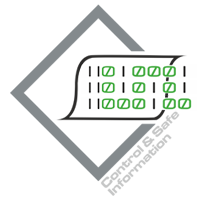|
Nutanix - Платформа нового поколенияThe Nutanix Virtual Computing Platform converges compute and storage into a single system, eliminating the need for traditional storage arrays. The Nutanix 2U chassis (block) contains two to four independent nodes, each optimized for high-performance compute, memory, and storage. Each node runs an industry-standard hypervisor, and a Nutanix controller VM. The controller VM handles all data I/O operations for the local hypervisor.All storage is directly mounted into the controller VM using a device pass-through mechanism. Storage resources are then exposed to the hypervisor through traditional interfaces, such as NFS or iSCSI. As new Nutanix nodes are added to the cluster, the number of controller VMs scale 1:1 to provide linear performance. Storage capacity from all nodes is aggregated into a global storage pool, which is accessible by all Nutanix controllers and hosts in the cluster. Containers are then defined from the storage pool, creating a logical datastore. Containers represent the main access point for the hypervisor, and are accessed using traditional interfaces. The Nutanix platform uses industry-standard hardware. It does not rely on custom FPGAs, ASICs, RAID controllers, or disk drives. As a software-defined solution, Nutanix maintains the control logic in the software, and enables new features through simple software upgrades. NDFS is extensible. The Nutanix platform does not require a shared backplane for communication. Instead, it leverages standard 10GbE for all communications between nodes and controllers, as well as for VM traffic. Scale-out architecture The Nutanix platform is based on the same architectural precepts that enable the world’s largest datacenters to scale. Google, Facebook, and Amazon all use a similar design. The Nutanix Distributed File System (NDFS) scales to thousands of nodes and maintains performance and availability as your system grows. Modular, converged building blocks (nodes) allow datacenter managers to start small and scale seamlessly to support future growth. The Nutanix n-way controller model scales the number of storage controllers with the number of nodes. This design eliminates the performance bottlenecks common with traditional dual-controller storage arrays. Each Nutanix node that is added to a cluster uses its local controller VM as its gateway to NDFS and as its primary I/O point. Nutanix takes a big-data approach with a distributed MapReduce framework to manage cluster-wide operations. Nutanix distributes tasks and operations for self-healing and the redistribution of data for high availability. IT can mix various Nutanix node types, whether they are compute-heavy or storage-heavy. So, your team can construct an infrastructure with the right balance for a particular environment or workload. Once they are powered on, new Nutanix nodes are automatically discovered using the Linux Avahi protocol and IPv6 link-local addresses. They are then added through the dynamic add-node process with zero downtime. Cluster metadata is distributed to new nodes as they are added, and storage resources are added to the cluster’s storage pool. This process extends the container’s capacity transparently. VMs are provisioned on the new hosts and cluster-balancing features such as DRS move VMs to the new hosts. |
Информация |
Продукты |
Контакты ул. Ольшанска 55/5, офис 302
г. Прага 3, 13000, Чехия Телефон/факс: +42 022 585 02 15 E-Mail: sales@itgoods.cz |
 |
| 2013-2025 © «PORTAL DISTRIBUTION GOODS» s.r.o. Все права защищены | Разработка и программирование RA-Company |
